#Rumex obtusifolius
Video
n312_w1150 by Biodiversity Heritage Library
Via Flickr:
A new British flora;. London,Gresham Pub. Co.,1919.. biodiversitylibrary.org/page/11330083
#Floras#Great Britain#Plants#Wild flowers#New York Botanical Garden#LuEsther T. Mertz Library#bhl:page=11330083#dc:identifier=https://biodiversitylibrary.org/page/11330083#Purple Dead Nettle#Lamium purpureum#White Dead Nettle#Lamium album#L.#All-good (Goosefoot)#Chenopodium album#Good King Henry#Chenopodium Bonus-Henricus#Knotgrass#Polygonum aviculare#Dairy Maid's Dock#Rumex obtusifolius#Wall Barley#Hordeum murinum#cottagecore#flowercore
10 notes
·
View notes
Text
Moth of the Week
Angle Shades
Phlogophora meticulosa
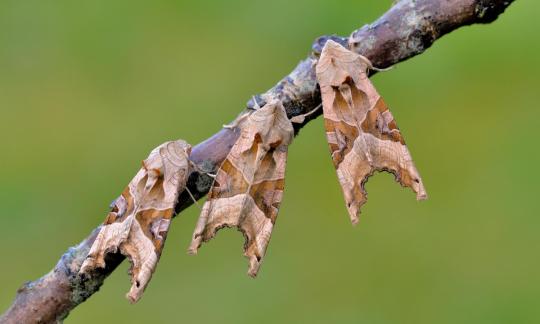
Image source
The angle shades is a part of the family Noctuidae. This species was first described in 1758 by Carl Linnaeus. According to Wikipedia, this moth gets its common name from the colors and marking on its wings.
Description The forewings of this moth are shaped with a sharp point. Most of the forewing is buffish as well as the head, legs, body, and antennae. The middle of the forewing is split by a triangle. The bottom of the triangle lays on the termen of the forewing or “the edge of the wing most distant from the body.” The triangle is made of layers of brown and pink. The hindwings are whitish with darker veins.
ab. roseobrunnea ab. nov [Warren], the central triangle is a rich red brown tinged with fulvous (tawny/orange), the whole wing reddish tinged, and the green shades all strongly mixed with red, the metathorax and dorsal tufts also being deep fulvous instead of green; found in São Jorge Island in the Azores
Wingspan Range: 45 - 52 mm (≈1.77 - 2.05 in)
Diet and Habitat This species eats a wide range of herbaceous plants such as Common Nettle (Urtica dioica), Hop (Humulus lupulus), Red Valerian (Centranthus ruber), Broad-leaved Dock (Rumex obtusifolius), Bramble (Rubus fruiticosus), Hazel (Corylus avellana), birches, oak, basil, and broccoli.
They are distributed throughout Europe. Their reach spans eastto the Urals, southeast to Syria, Armenia, and Asia Minor, west to Azores, and south to Algeria. They are a strongly migratory species. It is found in a variety of habitats such as gardens, hedgerows, fens, woodland, grasslands, farmland, wetlands, heathland, and moorland.
Mating This moth is generally seen from May to October and has two generations per year. The larva overwinter in soil as pupa.
Predators This species flies mainly at night. They are presumably preyed on by nighttime predators such as bats. This moth uses its coloration to disguise itself as a wilted leaf when at rest. They can be seen during the day resting on walls, vegetation, and feces.
Fun Fact The angle shades is attracted to light and sugar.
(Source: Wikipedia [1][2], Butterfly Conservation, The Wildlife Trusts)
#libraryofmoths#animals#bugs#facts#insects#moth#lepidoptera#mothoftheweek#angle shades#Phlogophora meticulosa#Noctuidae
50 notes
·
View notes
Note
They spend a lot of dates in a nice Lil forest looking at the wildlife
Hunter takes his gloves off for TWO MINUTES just to inspect some plants and gets himself stung by a nettle
Willow is like "Oh don't worry, I got this!!" And she spins a spell and a burst of leaves erupts from the ground.
"These are rumex obtusifolius. Or bitter docks, call them whatever you want. But they can help soothe nettle stings. Here, give me your hand."
Hunter blushes, tentatively extends his hand which Willow gently cradles. They hold eye contact for a tender moment.
Willow then proceeds to SPIT in Hunter's open palm and then rub the leaf over it
Hes just like

#hunter: GIRL?? HELLO??? THE FUCK ARE YOU DOING???#willow: the chemicals in bitter docks plus the antihistamine of salivia will ease the pain#hunter: i swear to the titan if youre fucking with me#huntlow
64 notes
·
View notes
Text
Spring Forage on Pizza

This pizza starts with the homemade crust as detailed in the video here by Tasty on Youtube https://youtu.be/sv3TXMSv6Lw
For this batch (which yields enough dough for 4 smaller pizzas or 3 larger pizzas) I used garlic infused vegetable oil instead of olive oil and the results were quite nice. Corn meal underneath this is great for absorbing excess liquid, a nice crunch, and ease of transfer so the pizza doesn’t stick to things.
The sauce was a mix of Sweet Baby Rays and a dash of Mango Habanero sauce from Buffalo Wild Wings.
The foraged spring greens I used in this pizza were Curly dock (Rumex crispus) and Broad leaf dock (Rumex obtusifolius) and bergamot (Monarda) chopped up and sprinkled on top after cooking. I also used multiplier onion from the garden.
For the store toppings, I used genoa salami, mozzarella cheese, red bell pepper, poblano pepper, and parmesan cheese.
I put some of the more sensitive things that I didn’t want to crisp up underneath the cheese layer, and the stuff I wanted to char a little on the very top. Sprinkled all that with a little salt to balance the veggies. Finally the parmesan and bergamot were applied after cooking.
I ate half of this before the picture because it was just that good XD
If you want to find the wild greens I used in this pizza, you’re quite likely to find them in the midwestern USA. The main thing I would say is make sure you’re harvesting them from an area that is free of heavy metal pollutants, because dock does tend to absorb those particular pollutants from industrial plants and such.
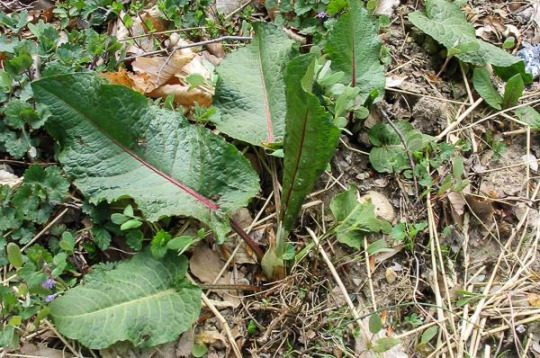
This here is a great example of broad leaf dock. I like to use the younger, more tender leaves like the one that is curled up in the picture here and cut out the widest part of the stem before chopping them up for the pizza. Be sure to check for bugs if it’s later in the year. Smaller doesn’t always mean more tender with dock either, usually I have the best luck with leaves closer to the middle of the plant/ones that are curled up. I would compare the taste to a light kale.

This is a good picture of curly dock. The edges are curly, the leaves are narrow and long. For these I don’t take out the stem since they’re so thin. They have a slight lemony hint to their flavor, but aren’t as common in my area as broad leaf dock. I have not had any problems with bugs on these ones.
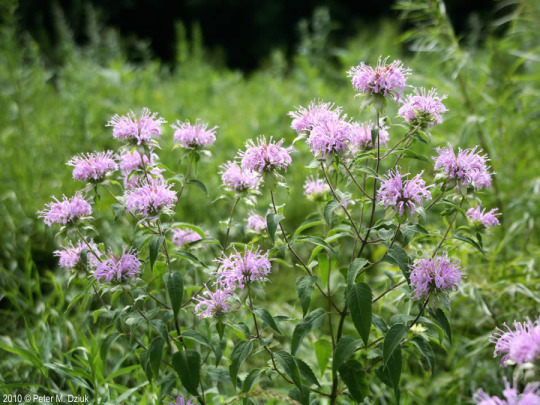
Monarda (bee balm, bergamot) is a varied plant that has different colored flowers and the different cultivars have different flavors. When someone in a foraging group first suggested this to me as a pizza herb, I thought they were crazy, because the variety usually found around here has a very strong menthol type of flavor. I have discovered over the years that these do have a good bit of variation between flavors from plant to plant. If you find the right monarda, it’ll be a fantastic pizza herb! And if you find the wrong one, well it will make a great medicinal tea for when you are congested XD
This is what it looks like before it flowers, like this time of year:

Thanks for reading and happy foraging / pizza making!
#forage#foraging#pizza#homemade#from scratch#herbs#baking#starchbean#spring#monarda#dock#curly dock#broad leaf dock#bergamot#bee balm
2 notes
·
View notes
Text
Nettles (alive, dead) and dock leaves
The stinging nettle (Urtica dioica): A bee sting in plant form. Both give you acidic stings, but whilst a bee will die after a single sting, the nettle holds no such melodrama. Importantly, the underside of the nettle has no stinging needles - using this, a nettle leaf can be folded and eaten. Quite delicious, but like oysters, it is best to only chew them just enough to experience the flavour. Unlike oysters, it is an established tea.
The dock leaf (Rumex obtusifolius): The apologetic, unassuming, elder sibling of our funny little trio. Never too far behind the stinging nettle, growing in the same habitat, it is a welcome gift for the unlucky or unwary. Simply crushing it's flat, broad leaf, arranged in small clumps, low to the ground, and rubbing the remains on the sting will greatly ease the pain. Unfortunately, as some kind of earthy punishment for irresponsible agricultural practices, or maybe it's simply prone to seasickness, it did not accompany the stinging nettle on its torment to Australia.
(Important note: it is NOT a certified doctor, and, in fact, does not hold any kind of medical certificate or degree).
The dead nettle (Lamium purpureum): Surprisingly, edible, and harmless enough. It's pretty pink-ish-purple flowers will ruin its disguise in certain seasons, along with its ever-present diminutive size. The dead nettle relies on the terrifying reputation of the stinging nettle to warn away anyone and anything. Yet, it you touch one, you will find no sting. Like if the spirit of the plant it pretends to be manifests in that sting, it finds itself lacking something it will never achieve. However, for the dead nettle, once that sting is proven absent, it's likely already dead - possibly uprooted for its uncanny skill of growing in driveways.
#nature#nettles#EBB#everything-bagel-blog#fun facts#now you know#dear tumblr I have decided to start posting into this faceless void and it does not matter if I never hear an echo back#I have spent long brewing in my own thoughts#And a boiling soup left alone for too long will explode unless the lid is taken off#brain soup
1 note
·
View note
Text
Many gardeners recognize the benefits of docks, also known as Rumex obtusifolius, for their gardens due to their potent antibacterial and anti-inflammatory capabilities. Docks are known to be a great ground cover, helping to suppress weeds and retain moisture in the soil.
Docks also attract peas, with their white flowers and their nectar production, which provides a great food source for bees and other pollinators. With their strong green leaves, docks also act as a backdrop to other plants and flowers that may add variety and colour to the garden.
Furthermore, docks are a great addition to edible garden landscapes due to their edible leaves and root parts, which can be cooked into a stew, sautéed, boiled, or eaten raw. As a bonus, the edible leaves of docks are great in salads and serve as an excellent source of dietary fiber, vitamins, and minerals.
A great advantage of docks is that they can be used to deter pesky pests, like slugs and snails, that can invade a vegetable garden. When the dock plants are placed around generous portions of the garden, the pests usually avoid those areas.
Given all of these benefits, it’s no surprise that docks are a great addition to any garden. Their nutrient-packed leaves, their ability to repel pests, and their attractive qualities all make them an enticing option for gardeners.
0 notes
Text



COW slices cooked up with some broad-leafed dock (Rumex obtusifolius), home canned tomatoes, local butter and garlic.
0 notes
Text
Docks – Rumex SPP.: Yellow Root of Edible & Medicinal Wild Plants - Song of the Woods
0 notes
Text
youtube
Rumex obtusifolius - patience à feuilles obtuses
#plante#plante comestible#plantes médicinales#rumex obtusifolius#rumex#patience#oseille#grande oseille
0 notes
Text

#dandelion#violet#lily of the valley#mayapple#bitterdock#wheat#Taraxacum#viola#Convallaria majalis#Podophyllum peltatum#American mandrake#wild mandrake#ground lemon#Rumex obtusifolius#broad-leaved dock#bluntleaf dock#dock leaf#illustration#hammock#garden#elsa beskow#baby#child#magic#summer#green#spring#flowers
3 notes
·
View notes
Quote
There are many methods for summoning the essence of a living person’s spirit or Swedish vålnad (though the term often pertains to the dead). One example is the British practice of seeing a vision of one’s future spouse at midnight on Hallows’ Eve by eating apple slices in front of a mirror. There are also practices and rituals that utilize sleeping for an evening before reading specific auguries, such as remocing plantain (Plantago lanceolata) florets wrapped in dock leaves (Rumex obtusifolius) and hiding them under a stone; in the morning, whether they had regrown new florets or not was an indicator of love prospects, a Scottish custom. While these kinds of traditions can be included in the category of night0induced predictions/visions, this work looks specifically to the dreaming realm for nighttime omens.
Corinne Boyer - Dream Divination Plants in Northwestern European Traditions
388 notes
·
View notes
Text
NEW! I’ve just launched my patreon page on www.patreon.com/healthherbsfood with more recipes and a possibility to consult with me about your health problems.
Stings
The following herbs can be used to ease the pain of stings:
– Coriander leaves:
You can make cabbage pottage with coconut and coriander leaves.

– Ivy (Hedera helix):
Ivy tincture can ease the pain of insect bites.
Ivy tincture: Chop a coffeespoon of fresh ivy leaves and pour it up with 5 dl/ 2 cups of spirit. Let it stand for two weeks. Strain the tincture and use it externally on insect bites.

– Witch hazel (Hamamelis virginiana):
You can make witch hazel solution and use it on itching stings..
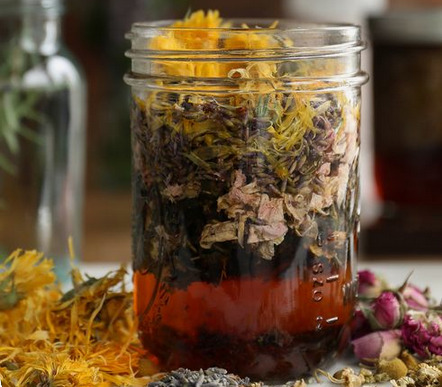
– Ribwort plantain (Plantago lanceolata):
You can use fresh plantain leaves chopped and applied directly on stings.

– Good-King-Henry (Blitum bonus-henricus):
You can use fresh Good-King-Henry leaves chopped and applied directly on nettle stings.
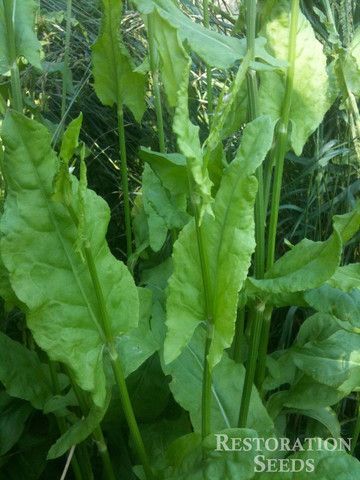
– Broad-leaved dock (Rumex obtusifolius):
You can use fresh leaves crushed on the skin. It is also especially good for nettle stings.

– Lavender essential oil mix for stings:
Lavender oil has a calming effect on the skin.
For the mix you will need the following ingredients:
– 10ml/ 0,34 fl oz olive oil
– 4 drops of lavender essential oil
– 5 drops of tree tea oil
Mix the oil, and use it topically on the affected areas.

For the full post with two more recipes see www.patreon.com/healthherbsfood
Consulting with the GP see www.patreon.com/healthherbsfood
18 notes
·
View notes
Text
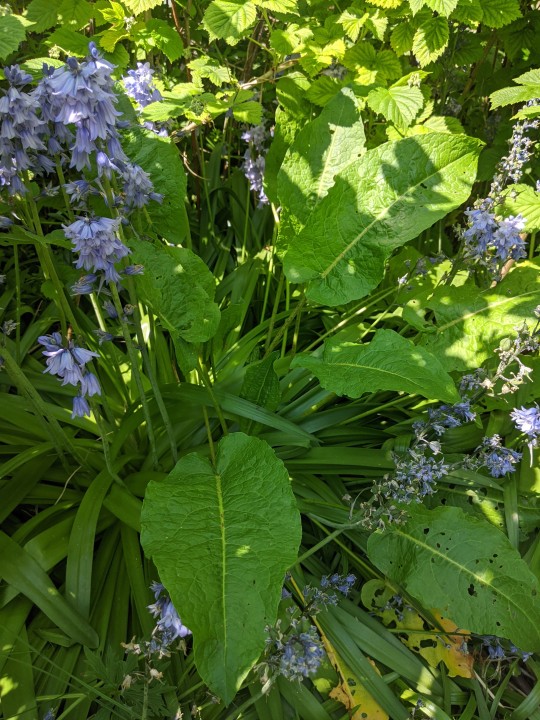
Doc leaf - Rumex obtusifolius
#plants#plants and herbs#medical plants#plants and flowers#herbsforspells#medicinal herbs#dried herbs#growing herbs#organic herbs#fresh herbs#cottage garden#nature#naturecore#cottagecore#gardening#garden#cottagehome#spring flowers#flowers
33 notes
·
View notes
Text
Ranunculus acris and Rumex obtusifolius sound like cool spells, but they're just buttercup and broad leaf dock. Araujia hortorum sounds like a cool name but it is a nasty smelly weed. Hedera helix is ivy. Beta vulgaris is silverbeet.
8 notes
·
View notes
Photo

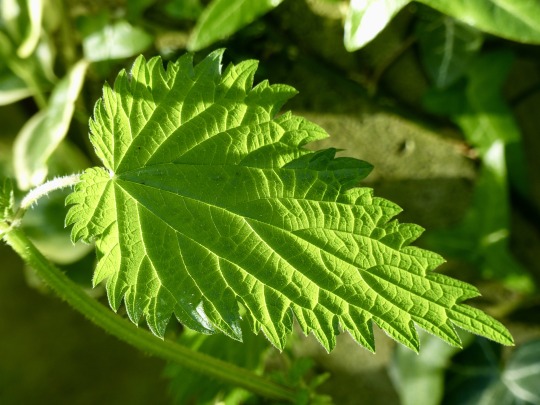
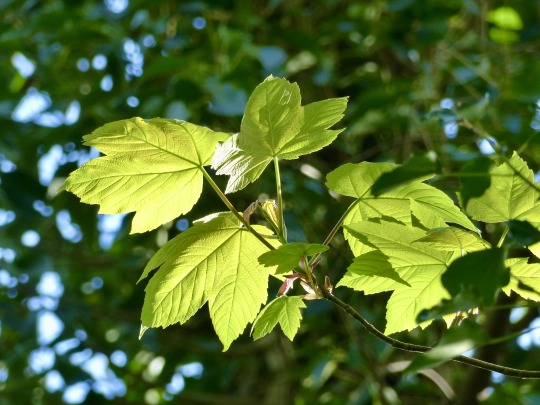


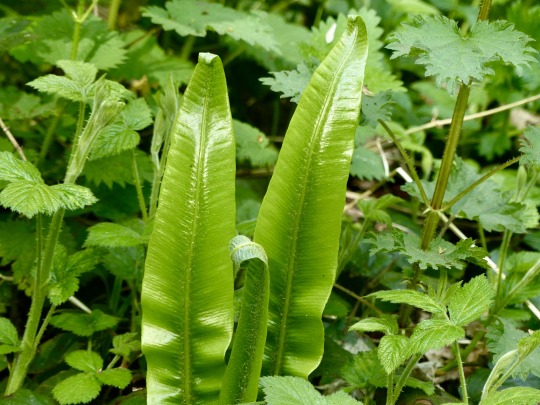
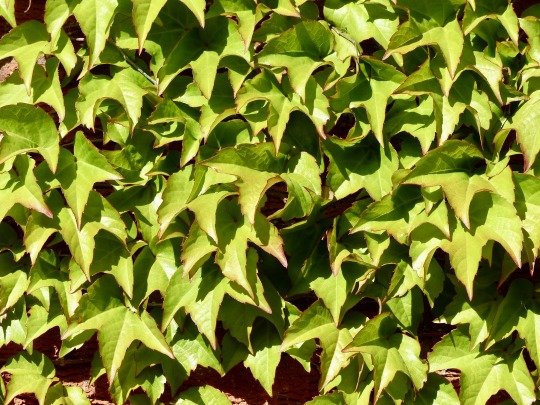
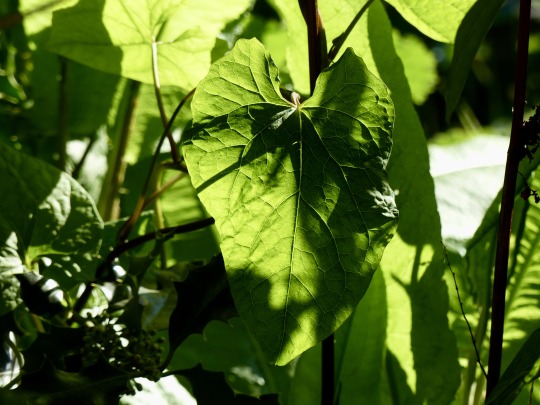
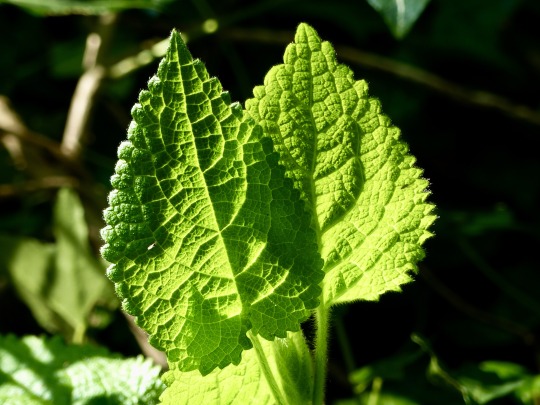
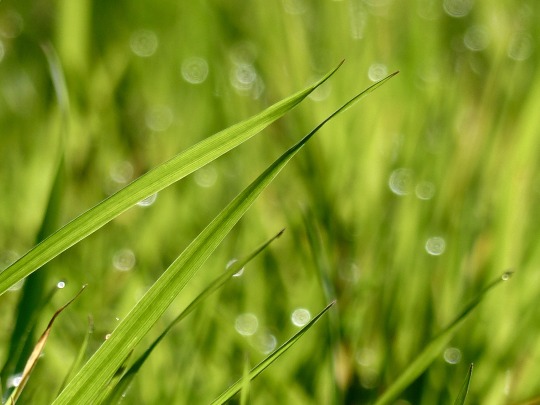
My April 2020 In Pictures - Spring Greens.
(Click on a picture for a close-up & see descriptions 1-10 below.)
1. Tuesday 14th April 2020 at 09:02. Leaves, Shore Road, Hythe, Hampshire.
2. Tuesday 14th April 2020 at 09:03. Common stinging nettle (Urtica dioica), Shore Road, Hythe, Hampshire.
3. Tuesday 14th April 2020 at 09:08. Sycamore (Acer pseudoplatanus), Shore Road, Hythe, Hampshire.
4. Tuesday 14th April 2020 at 09:10. Dock leaves (Rumex obtusifolius), broad-leaved dock, bitter dock, blunt leaf dock, butter dock, Shore Road, Hythe, Hampshire.
5. Thursday 16th April 2020 at 09:51. Leaves, Shore Road, Hythe, Hampshire.
6. Thursday 16th April 2020 at 10:01. Hart’s tongue fern (Asplenium scolopendrium), burnt weed, buttonhole, Christ’s hair, horse tongue, Shore Road, Hythe, Hampshire.
7. Thursday 16th April 2020 at 17:03. Ivy (Hedera), St John’s Street, Hythe, Hampshire.
8. Thursday 16th April 2020 at 17:25. Bindweed (Calystegia sepium), hedge bindweed, bellbind, St John’s Churchyard, Hythe, Hampshire.
9. Monday 20th April 2020 at 09:22. Leaves, Shore Road, Hythe, Hampshire.
10. Monday 20th April 2020 at 09:30. Grass, Shore Road, Hythe, Hampshire.
To read about My April 2020 In Pictures - Spring Greens, click on the link:- http://susanvale.blogspot.com/2020/05/my-april-2020-in-pictures-spring-greens.html
To read about the Common stinging nettle (Urtica dioica), click on the link:- https://www.wildlifetrusts.org/wildlife-explorer/wildflowers/stinging-nettle
To read about the Sycamore, click on the link below:-https://www.woodlandtrust.org.uk/trees-woods-and-wildlife/british-trees/a-z-of-british-trees/sycamore/
To read about Dock leaves (Rumex obtusifolius), click on the link:-https://www.rhs.org.uk/Plants/16169/Rumex-obtusifolius/Details
To read about Hart’s tongue fern (Asplenium scolopendrium), click on the link:- https://www.wildlifetrusts.org/wildlife-explorer/ferns-and-horsetails/harts-tongue-fern
To read about Ivy (Hedera), click on the link below:-https://en.wikipedia.org/wiki/Hedera
To read about Bindweed (Calystegia sepium), click on the link below:-https://en.wikipedia.org/wiki/Calystegia_sepium
To read about Hythe, Hampshire, click on the link below:-https://en.wikipedia.org/wiki/Hythe,_Hampshire
1 note
·
View note
Text
The Lost Book Of Remedies Pdf Download
The Lost Book Of Remedies Pdf Download
The Lost Book Of Remedies Pdf Download
hello and welcome to the lost book of remedies review. Basically, "The Lost Book of Remedies" is over 300-pages of our forefathers' most powerful natural cures that have been lost to history.
A few of them are the treatments and homemade remedies our grandparents utilized when we were kids to nurse us back to health.
Others can help us heal as we're moving into our senior years and health problems begin to creep up.
And you do not need to be an herbalist to use it.
In fact, "The Lost Book of Remedies" was made for typical folk with no previous plant knowledge.
It will allow you to turn your yard weeds into painkillers, prescription antibiotics and many more forgotten however highly effective remedies.
In times of crisis, this book will probably wind up saving lots of American lives.
Click here to get your hands on the lost book of remedies
Medicine Chest in Your Backyard-The Lost Book Of Remedies Pdf Download
What could be much easier than growing an herb garden with no effort? Naturally, you'll have to harvest your weeds, however, you would do that anyhow: it's called weeding.
Spring is a particularly fertile time for gathering your weeds - roots and all - and turning them into medicines. Here then are some suggestions on how to find, harvest, prepare, and utilize a baker's dozen (13) of common weeds that probably currently grow around you.
To make your medicines you'll require glass jars of numerous sizes with tight-fitting lids. And a minimum of a pint each of apple cider vinegar (pasteurized), vodka (100 proof is best, but 80 proof will do), and pure olive oil (not additional virgin) or good quality animal fat such as lanolin, lard, or stomach fat from a lamb or kid. You will likewise want a knife, a cutting board, and some rags to mop up spills.
In general, you will fill a container (of any size) with coarsely-chopped fresh, but dry, plant product. (Do not wash any part of the plant other than roots, if you are using them, and be sure to dry those well with a towel before putting them in your container.) Then you will fill the jar with your menstruum, which is the vinegar, the oil, or the alcohol. Label well and permit to stand at space temperature level, out of the sunshine for at least 6 weeks prior to decanting and utilizing. (See my book Recovery Wise for more specific info on making preparations.).
A field guide is practical for positively recognizing your weeds. The one I like best is A Guide to the Recognition of New Zealand Common Weeds in Colour, complied by E. A. Upritchard. (Offered from the New Zealand Weed And Pest Control Society, P.O. Box 1654, Palmerston North) This book even shows you how the weeds look when they are emerging.
Ready? OK! Let's go outside with a plant id guide or skilled herbalist and see what we can find.
Shepherd's purse (Capsella bursa pastoris) is an annual in the mustard family. Cut the leading half of the plant when it has actually formed its little heart-shaped "bags" (seed pods) and make a tincture (with alcohol), which you can use to stop bleeding. Midwives and females who bleed greatly during their period praise their timely effectiveness. Gypsies claim it works on the stomach and lungs too. A dose is 1 dropperful (1ml); which may be duplicated up to four times a day.
Cleavers (Gallium aparine) is a persistent, sticky plant that grows profusely in abandoned lots and the edges of cultivated land. The entire plant is used to reinforce the lymphatic activity. I cut the top two-thirds of each plant while it is in flower (or setting seeds) and utilize alcohol to make a tincture that relieves tender, swollen breasts, PMS symptoms, and allergic reactions. A dose is 15-25 drops (.5 - 1 ml); repeated as needed.
Chickweed (Stellaria media) has many usages, consisting of scrumptious salad greens. I cut the whole top of the plant and consume it or utilize alcohol to make a tincture, which dissolves cysts, tonifies the thyroid, and aids in weight-loss. Dosage is a dropperful (1 ml), up to 3 times a day.
Daisy (Bellis perennis) is a typical perennial weed of yards and open locations. Rather different from the native daisy (Lagenifera petiolata), the little English daisy is related to feverfew and has similar capabilities. I use the leaves and flowers to make a cast (with alcohol) or medicinal vinegar which eliminates headaches, muscle pain, and allergy signs. Dosage is a dropper full of the tincture (1 ml), approximately twice a day; or a tablespoon of the vinegar in the early morning.
Dandelion (Taraxacum Officinalis) is a persistent seasonal of lawns and gardens and among the very best known medical herbs worldwide. (The native dandelion of New Zealand - Taraxacum magellanicum - is medical too.)
Those who enjoy a pure green yard curse the warm yellow flowers of typical dandelion. But those who want to see charm anywhere (such as kids and herbalists) treasure this weed. You can use any part of the dandelion - the root, the leaves, the flowers, even the flower stalk - to make a cast or medical vinegar which reinforces the liver.
A dosage of 10-20 drops of the tincture (.5 -1 ml) eases gas, heartburn, and indigestion, in addition to promoting healthy bowel movements. A tablespoon of the vinegar works well, too. More importantly, taken before meals, dandelion boosts the production of hydrochloric acid in the stomach, hence increasing the bio-availability of many nutrients, especially calcium.
The fresh or prepared green leaves are filled with carotenes, those anti-cancer, anti-heart disease helpers. And the oil of the flowers is a crucial massage balm for preserving healthy breasts. (There's lots more information on dandelions in Healing Wise.).
Dock, also called yellow dock, curly dock, and broad dock is a seasonal plant, which my Native American grandmas use for "all females' problems." The Maori call it Pae Whenua or runa. It is another plant that disagrees with sheep, especially when the land is overgrazed.
I dig the yellow roots of Rumex Crispus or R. obtusifolius and tincture them in alcohol to utilize as an ally when the body's immune system or the liver requires help. A dose is 15-25 drops (.5 -1 ml). I also gather the leaves and/or seeds throughout the growing season and make medicinal vinegar, taken a tablespoon at a time, which is used to increase blood levels of iron, lower menstrual flooding and cramping, and balance hormone levels.
If the chopped roots are taken in oil for six weeks, the resulting lotion is advantageous for keeping the breasts healthy.
Groundsel (Senecio vulgaris) and Ragwort (Senecio jacobea) are hardy perennials that have credibility for poisoning animals, like their cousin tansy. Although bad for sheep, these 2 Senecios are some of the world's most ancient healing plants, having actually been discovered in a severe 60,000 years of age.
You can utilize the blooming tops and leaves with your alcohol to make a tincture which acts gradually to tonify the reproductive organs, ease PMS, and stop extreme menstrual pain. Dosage is 5-10 drops (.2 -.5 ml) daily, utilized just once a day, but for at least 3 months. (A bigger dosage is utilized to accelerate labor.).
Mallows (Malva neglecta, M. parviflora, M. Sylvestre) grow well in disregarded gardens and are remarkably deep-rooted. The flowers, leaves, stalks, seeds, and roots are abundant in sticky mucilage which is finest extracted by soaking the fresh plant in cold water overnight or longer or by making a medical vinegar.
The starch is extraordinarily soothing internally (reducing sore throats, upset stomachs, heartburn, irritable bowel, colic, constipation, and gastrointestinal disorder) and externally (relieving bug bites, burns, sprains, and aching eyes). The leaves, flowers, and bark (especially) of the native Hohere (Hoheria populnea) are utilized in precisely the same way by Maori herbalists.
Plantain, likewise called ribwort, pig's ear, and the bandaid plant is a typical weed of yards, driveways, parks, and playgrounds. Determine it by the 5 parallel veins running the length of each leaf. You may discover broadleaf plantain (Plantago significant) with broad leaves or narrow leaf plantain (Plantago lanceolata) with lance-thin leaves.
Either can be utilized to make a recovery poultice or a relaxing oil commonly considered as one of the very best injury therapists around. Not only does plantain boost the speed of healing, it likewise eases pain, stops bleeding, draws out foreign matter, stops itching, avoids and stops allergic reactions from bee stings, kills germs, and minimizes swelling.
Attempt a plaster or a generous application of plantain oil or lotion (made by thickening the oil with beeswax) on sprains, cuts, insect bites, rashes, chafed skin, boils, swellings, chapped and cracked lips, rough or sore hands, infant's diaper location, and burns.
To make a fresh plantain poultice: Pick a leaf, chew it well and put it on the boo-boo. "Like magic" the pain, itching, and swelling vanish, fast! (Yes, you can dry plantain leaves and carry them in your first aid kit. Chew like you would fresh leaves.).
To make plantain ointment: Pick large fresh plantain leaves. Slice coarsely. Fill a clean, dry, glass jar with the chopped leaves. Put pure olive oil into the leaves, poking about with a chopstick until the container is completely full of oil and all air bubbles are released.
Cap well. Place container in a little bowl to gather any overflow. Wait 6 weeks. Then stress oil out of the plant product, squeezing well. Measure the oil. Heat it gently, including one tablespoon of grated beeswax for each liquid ounce of oil. Pour into jars and permit to cool.
St. Joan's/ John's wort (Hypericum perforatum) This stunning perennial wildflower might be disliked by sheep farmers but herbalists love it. The flowering tops are collected after they begin to bloom (generally on Solstice, June 21) and prepared with alcohol, and with oil, to make two of the most beneficial remedies in my first-aid package.
Tincture of St. Joan's wort not just lends one a warm disposition, it dependably alleviates muscle aches, is an effective anti-viral and is my first-choice treatment for those with shingles, sciatica, back pain, neuralgia, and headaches consisting of migraines. The usual dose is 1 dropperful (1 ml) as frequently as needed.
In extreme pain from a muscle spasm in my thigh, I utilized a dropperful every twenty minutes for two hours, or until the pain totally subsided. St. Joan's wort oil stops cold sores in their tracks and can even eliminate herpes signs. I utilize it as a sunblock. Contrary to common belief, St. Joan's wort does not cause sun level of sensitivity; it avoids it. It even prevents burns from radiation treatment. Eases sore muscles, too.
Self-recover (Prunella vulgaris) This odorless perennial mint is one of the great unsung therapists in the world. The leaves and flowers contain more antioxidants - which prevent cancer and heart problem, among other healthy traits - than any other plant checked. And as part of the mint family, self-recover is imbued with great deals of minerals, especially calcium, making it an especially essential ally for pregnant, nursing, menopausal, and post-menopausal females.
I put self recover leaves in salads in the spring and fall, make a medicinal vinegar with the flowers throughout the summer, and prepare the flowering tops (fresh or dried) in winter soups.
Usnea (Usnea barbata) is that many-stranded grey lichen hanging out of the branches of your apple trees or the Monterey pines planted in the plantation over there or in almost any native tree in areas of the South Island Alps, where it is referred to as angiangi to the Maori. If in doubt of your recognition:
Pull a hair gently apart with your hands, searching for a white fiber inside the fuzzy grey-green external coat. To prepare usnea, harvest at any time of the year, taking care not to take too much. Usnea grows gradually. Put your harvest in a cooking pan and just cover it with cold water. Boil for about 15-25 minutes, or until the water is orange and minimized by at least half. Put usnea and water into a container, filling it to the top with plant material.
(Water should disappear than half of the container.) Include the greatest proof of alcohol you can buy. After 6 weeks this tincture is ready to work for you as an outstanding antibacterial, countering infection throughout the body. Dosage is a dropperful (1 ml) as regularly as every two hours in intense circumstances.
Yarrow (Achellia millefolium) This beautiful perennial weed is grown in numerous herb gardens for it has a wide variety of uses. Cut the flowering tops (use just white-flowering yarrow) and use your alcohol to make a strongly-scented cast that you can take internally to prevent colds and influenza. (A dose is 10-20 drops of up to 1 ml).
I bring a little spray bottle of yarrow tincture with me when I'm outdoors and wet my skin every hour approximately. A United States Army study showed yarrow tincture to be more effective than DEET at fending off ticks, mosquitoes, and sand flies. You can likewise make a healing lotion with yarrow flower tops and your oil or fat. Yarrow oil is antibacterial, pain-relieving, and incredibly valuable in healing all types of injuries.
To find out more Please visit The lost book of remedies post
VISIT OUR POST ON THE LOST BOOK OF REMEDIES
youtube
1 note
·
View note
